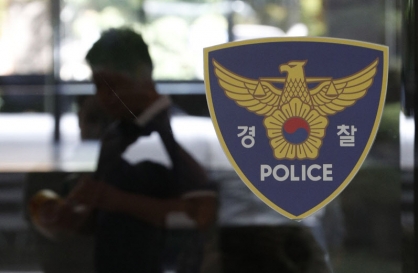Insurance firms told to increase capital
Non-life insurance industry suffers from low returns from asset management
By Kim Yon-sePublished : Dec. 11, 2012 - 19:33
The Financial Supervisory Service is taking stern regulatory measures against the insurance sector as some businesses have seen their financial status worsen from low returns.
As a remedy, the regulator instructed some insurance firms to raise their capital base. It has found that some non-life insurers are suffering weak capability for insurance payments to policyholders.
Those that will be under close monitoring of the FSS include players whose “risk-based capital” ratio stayed below optimum level.
The ratio, which refers to the minimum amount of capital insurance firms need to maintain their business, is a barometer for the industry’s financial standing. It measures the ratio of a company’s capital to its risk-weighted assets.
Should an insurance firm post a ratio below 100 percent, the FSS would take regulatory actions to normalize its management. Lower figures could mean feasibility of insolvency.
Insurance firms are required to keep an RBC ratio of 200 percent in order to maintain sound fiscal condition, which is the minimum requirement needed for them to conduct bancassurance, which refers to insurance product sales via banks’ distribution channels.
Lotte Non-Life Insurance with a figure of 148.5 percent plans a major capital increase by next year under the guidance of the FSS.
LIG Insurance and Hanwha General Insurance reported RBC ratios of 192.5 percent and 167.9 percent at the end of September, respectively, according to FSS data.
Among others with weak financial soundness are Hi-Car Direct and Axa General Insurance.
FSS officials said they are advising insurers to increase their capital via various channels, even if the crisis is not imminent, as it is important that major shareholders of the firms take precautionary measures.
In addition, the regulator is also mulling a step to allow local insurers to diversify their investment portfolio, much of which currently centers on state bonds, in an attempt to bolster their returns from asset management.
“The overall non-life insurance industry has faced the worst-ever business difficulties due to plummeting returns from asset management operations,” an analyst said.
Samsung Fire & Marine Insurance, Hyundai Insurance, Dongbu Insurance and LIG Insurance posted returns on investment assets stood at 4.56 percent, 4.57 percent, 4.55 percent and 4.33 percent, respectively, earlier this year.
The average return of these four major non-life insurers stood at a meager of 4.53 percent.
The average return of the nation’s 15 non-life insurers landed at 4.43 percent and that of small and mid-sized firms, which excludes the nation’s four big players, reached 4.12 percent.
The figure is the lowest since the relevant data compilation began.
At the current pace, some non-life insurance companies can possibly go bankrupt because non-life insurance companies with assets being just one-fifth of life insurance companies’ lack risk management capacities.
By Kim Yon-se (kys@heraldcorp.com)
As a remedy, the regulator instructed some insurance firms to raise their capital base. It has found that some non-life insurers are suffering weak capability for insurance payments to policyholders.
Those that will be under close monitoring of the FSS include players whose “risk-based capital” ratio stayed below optimum level.
The ratio, which refers to the minimum amount of capital insurance firms need to maintain their business, is a barometer for the industry’s financial standing. It measures the ratio of a company’s capital to its risk-weighted assets.
Should an insurance firm post a ratio below 100 percent, the FSS would take regulatory actions to normalize its management. Lower figures could mean feasibility of insolvency.
Insurance firms are required to keep an RBC ratio of 200 percent in order to maintain sound fiscal condition, which is the minimum requirement needed for them to conduct bancassurance, which refers to insurance product sales via banks’ distribution channels.
Lotte Non-Life Insurance with a figure of 148.5 percent plans a major capital increase by next year under the guidance of the FSS.
LIG Insurance and Hanwha General Insurance reported RBC ratios of 192.5 percent and 167.9 percent at the end of September, respectively, according to FSS data.
Among others with weak financial soundness are Hi-Car Direct and Axa General Insurance.
FSS officials said they are advising insurers to increase their capital via various channels, even if the crisis is not imminent, as it is important that major shareholders of the firms take precautionary measures.
In addition, the regulator is also mulling a step to allow local insurers to diversify their investment portfolio, much of which currently centers on state bonds, in an attempt to bolster their returns from asset management.
“The overall non-life insurance industry has faced the worst-ever business difficulties due to plummeting returns from asset management operations,” an analyst said.
Samsung Fire & Marine Insurance, Hyundai Insurance, Dongbu Insurance and LIG Insurance posted returns on investment assets stood at 4.56 percent, 4.57 percent, 4.55 percent and 4.33 percent, respectively, earlier this year.
The average return of these four major non-life insurers stood at a meager of 4.53 percent.
The average return of the nation’s 15 non-life insurers landed at 4.43 percent and that of small and mid-sized firms, which excludes the nation’s four big players, reached 4.12 percent.
The figure is the lowest since the relevant data compilation began.
At the current pace, some non-life insurance companies can possibly go bankrupt because non-life insurance companies with assets being just one-fifth of life insurance companies’ lack risk management capacities.
By Kim Yon-se (kys@heraldcorp.com)










![[New faces of Assembly] Architect behind ‘audacious initiative’ believes in denuclearized North Korea](http://res.heraldm.com/phpwas/restmb_idxmake.php?idx=644&simg=/content/image/2024/05/01/20240501050627_0.jpg&u=20240502093000)
![[Music in drama] Rekindle a love that slipped through your fingers](http://res.heraldm.com/phpwas/restmb_idxmake.php?idx=644&simg=/content/image/2024/05/01/20240501050484_0.jpg&u=20240501151646)






